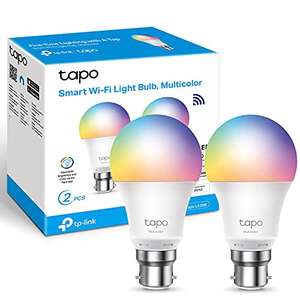

Energy Deals & Offers
5 active deals80,142 commentsAll Energy discounts and offers overview - April 2024





 hotukdeals
hotukdeals hotukdeals
hotukdeals 





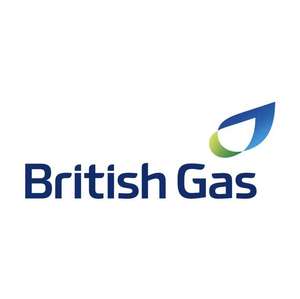

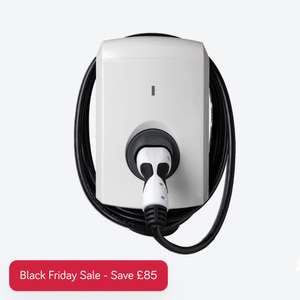
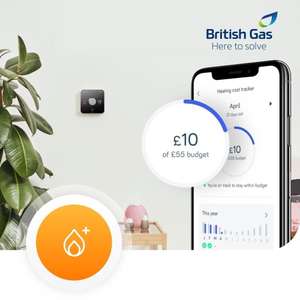


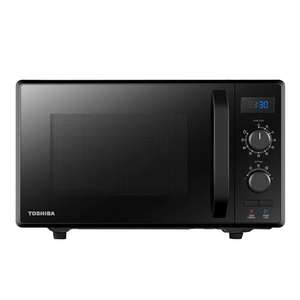



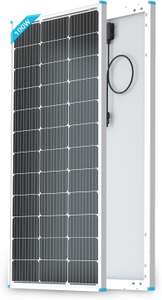







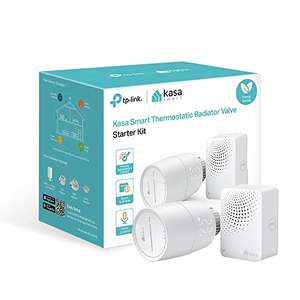

Switching Energy Supplier: Tips from hotukdeals
Switching energy suppliers is not as difficult as people might think. Gas is gas; electricity is electricity; you don’t get “better” gas or electricity from a different supplier – just cheaper.
Why You Should Switch Energy Suppliers
There’s one big reason why you should consider switching energy suppliers: to save money.
Energy regulator Ofgem reckons households can save about £300 a year by switching suppliers while price comparison websites (more about them later) often put the figure even higher.
So, you can save £300 by doing something that takes about 20 minutes max. What’s not to like?
But if you need more reasons, how about:
To find an environmentally-friendly tariff.
To escape poor customer service.
When you switch suppliers, there’s no difference to the pipes or cables that come into your home, and no downtime without power. Nor are you at a higher risk of power cuts with a particular supplier – that’s down to the National Grid, not individual suppliers.

Who Can Switch Energy Suppliers?
If you pay the energy bill for your home, you can switch tariffs. This includes tenants – your landlord can’t stop you from switching suppliers if the bill’s in your name.
The only time you may run into problems switching energy suppliers is if you’re in debt to your current supplier – you’ll need to pay this off before moving. People on prepayment meters or Economy 7 may also find their options are limited (more on these later).
Energy Companies in the UK
The UK energy market is broadly split into two distinct groups of suppliers:
The “big six”
Challenger brands
The Big Six Suppliers
The big six energy suppliers, as we know them today, are largely the legacy of energy privatisation that occurred in the 1990s. Various mergers and acquisitions have taken place since then, leaving us in a position where six large, well-established companies provide energy to about 90% of UK homes.
The big six are:
Scottish and Southern Energy (SSE)

Challenger Firms
The big six rely on customer apathy to make money – and it works. Many people like to stick to a name they know. But if you look at the energy best buy tables you’ll notice the big six barely get a mention – all the cheapest tariffs are offered by new “challenger” energy companies. These include:
GB Energy
Avro
Gnergy
So Energy
Octopus Energy
Economy Energy
However, although challengers’ tariffs will be listed on price comparison sites, they don’t all allow you to switch through them. This could be because:
The comparison site and supplier don’t have a commercial agreement.
The challenger company doesn’t want to take on too many customers all at once, but scale up gradually instead.
If you cannot initiate the switch through the comparison site, you’ll need to contact the new supplier directly, either by phone or online, to move.
Should you be worried about having you gas and electricity supplied by a new company?
In a word, no. These suppliers are subject to the same Ofgem licencing conditions as their bigger counterparts, and so customers benefit from the same protections too. In the unlikely event a supplier goes bust, your account and supply will transfer to another energy firm – you won’t be left without power.
British Gas – Smart Meters for Smarter British Homes

How to Find a New Energy Deal
The best way to find a new energy deal is to use a price comparison site to compare tariffs.
Ofgem has approved a number of online price comparison sites which means, in theory, you can trust the options and prices you find on them are calculated and displayed in a fair and accurate way.
Ofgem-approved comparison sites include:
Uswitch.com
Moneysupermarket.com
Theenergyshop.com
What You Need to Compare Energy Tariffs
Energy comparison sites need the following information to find the best tariffs for you:
Your postcode (some suppliers offer different prices in different regions).
The name of current supplier.
The name of the energy tariff you're currently on and how much you spend on gas and electricity. You can find this information on a recent bill.
How you pay for your energy (i.e. monthly direct debit or quarterly bill).
If you don’t know how much you spend on gas and electricity, or your current tariff, you can normally answer a few questions about your home and lifestyle to arrive at an estimated figure.

Types of Energy Tariff
Energy suppliers all offer various types of tariff. The main ones are:
Standard tariff – This is a supplier's 'default' tariff. It will have variable prices that can go up and down with the market. In most cases, customers on a fixed tariff will be moved to their supplier’s standard tariff at the end of the fixed period. This usually means their bill goes up.
Fixed energy tariff – This is a tariff which offers guaranteed standing charges and unit rates, usually until a set end date. Don’t confuse this with always paying the same amount each month – this could change depending on how much energy you use. Fixed deals tend to be for one or two years and some will have an exit fee if you leave before your contract end date.
Dual fuel tariffs – A dual fuel energy tariff provides gas and electricity from the same energy supplier. Opting for a dual fuel tariff can simplify your bills and most suppliers offer their cheapest tariffs to dual fuel customers. Some dual fuel tariffs will have an exit fee if you leave before your contract end date.
Online energy tariffs – Online energy tariffs require you to manage your account via the internet. You will be asked to send meter readings online and will receive 'paperless' bills either by email or via logging into your account online. Payment is by monthly direct debit.
Green energy tariffs – Green energy is electricity and natural gas that comes from renewable sources, such as hydro, wind, biomass and solar, instead of traditional fuels like coal and natural gas. Mainstream suppliers that offer green energy tariffs, as well as dedicated green energy suppliers, source a greater proportion of their fuel from renewable sources, but not necessarily 100%.
What’s the Cheapest Type of Tariff?
It’s not an exact science but the cheapest energy tariffs tend to be these three things:
Dual fuel, fixed
Managed online
Payment by monthly direct debit
In general, standard variable tariffs are the most expensive deals although prepayment and Economy 7 tariffs (see below) can be pricey too.

Paying by Monthly Direct Debit
With most tariffs your energy supplier will estimate how much your energy will cost each month then set an amount that automatically comes out of your bank account on a specified day each month.
As energy use fluctuates so much, it would be very rare for your monthly payment amount to actually cover your usage exactly, so each month you’re likely to overpay or underpay by an amount.
If you regularly overpay you’ll build up credit on your account. You can normally ask for credit to be repaid to you at any time. You can also request for your direct debit payment to be lowered.
If you regularly underpay, you’ll build up a debt on your account and your energy supplier will either ask for the debt to be paid off, or increase your monthly direct debit amount.
In general, paying for energy by monthly direct debit is the best option for most people. As most people are paid monthly it can help with budgeting. Tariffs which insist on payment by monthly direct debit are usually cheaper than tariffs with quarterly paper bills.
What to Watch out for When Switching Energy Tariffs
Exit or cancellation fees – Exit or early termination fees are often (but not always) applied to energy tariffs that have a fixed price and defined end date. Customers typically pay an exit fee of £25 per fuel – so £50 for both gas and electricity. If you are currently on a fixed tariff, check if you can exit for free. In most cases, it’s best to wait until the tariff’s end date before trying to switch. Otherwise, make sure you take exit fees into account when calculating how much money you can save by switching – is it still worth it?
Warm Home Discount – Some people on a low income or certain benefits will be eligible for the Warm Home Discount. This £140 payment is a one-off discount on your electricity bill, between September and March. It’s not paid to the bill payer, but straight to the supplier, from the government. Not all energy suppliers participate in the Warm Home Discount scheme – so check your new supplier takes part before you switch.
Customer service – Unfortunately, not everyone is happy with their energy supplier and complaints about customer service and billing errors are common. Before you switch, it’s worth checking out how other customers view your intended supplier. Which? runs regular satisfaction surveys and you can also search Google to seek out existing customers’ opinions. Don’t be fooled into thinking the big six have superior customer service – some of the worst billing errors come from these large companies.
How to Switch Tariffs
The easiest way to switch suppliers is to do it via a price comparison site. Once you’ve selected a tariff to switch to, the site will do all the hard work for you.
If you’re switching to a new energy supplier that doesn’t allow switching through comparison sites, you’ll need to contact the new company directly. It will set up the switch and tell your old supplier.
Either way, take a meter reading on the day your supply is being transferred over (you’ll be notified when this is). This can help ensure your final bill from your old supplier is correct, and that your new supplier starts billing you from the correct date.
You’ll also need to give the new supplier your energy meter reference numbers, known as 'MPRN' or 'MPAN' numbers. This will make sure they switch your energy supply and not someone else's. You can find these numbers on your energy bill and on the meters themselves.

How Long Does it Take to Switch?
Ofgem guidelines mean that, ideally, switching supplier should take no longer than 17 days from the date you arrange to change supplier. This allows for a 14-day "cooling off period" where you can change your mind. This is a big improvement on how things used to be – not long ago it was the norm for a switch to take six weeks.
However, not all suppliers are on board with this faster switching; some smaller companies might take longer – check timescales when you sign up.
Once the switch has completed, you’ll receive a final bill from your old supplier. If you’re lucky, you’ll be in credit and receive a refund rather than having to pay to close your account.
Other Types of Energy Tariff
Prepayment Tariffs
Prepayment tariffs are for people with prepayment meters and enable customers to pay in advance for energy by 'topping-up' their meter using prepay tokens, cards or a key. Although this can help people budget, prepayment is generally an expensive way to pay for energy.
Some customers will have little option but to go on a prepayment tariff. This might be the case if they fail a provider's credit check, necessary to be accepted for monthly or quarterly billing. Suppliers can also force existing customers on to prepayment meters if they have a significant debt on their account and have not attempted to pay it off.
If you’re on a prepayment tariff for no reason, you should research how to switch to a normal meter which will enable you to benefit from the cheapest energy tariffs on the market.
Economy 7 Tariffs
Economy 7 is a type of electricity (not gas) tariff that charges different prices per kWh based on your time of use, and is used with an Economy 7 meter. It's usually based around day and night-time usage, with the price/kWh being cheaper at night. It's called Economy 7 because you get cheaper electricity for seven hours each night.
An Economy 7 tariff is usually used by people who have electric storage heaters and a hot water tank.
Suppliers don’t really push Economy 7 tariffs anymore – despite the name they’re rarely economical. Anyone on this type of tariff and heating their home using storage heaters would be well advised to research other options.

Smart Meters
Smart meters are a new type of meter that will replace your existing gas and electricity meters. Every home in Britain is on track to have a smart meter by the end of 2020 and your energy supplier should fit it for free.
When you have a smart meter installed, you'll get:
A smart electricity meter
A smart gas meter
An in-home display
These meters are “smart” because they send all the information about how much gas and electricity you use directly to your energy supplier using the Data Communications Company (DCC) which is similar to a mobile network.
If you have a smart meter installed it means:
You won’t have to provide manual meter readings anymore.
Your supplier will no longer send estimated bills if it doesn’t have meter readings.
You’ll get a better understanding of your energy usage from the smart meter display.
In the future energy suppliers will have a better understanding of usage patterns and be able to provide innovative energy tariffs such as cheaper rates at off-peak times to smooth out national energy usage through the day.
Can You Switch Energy Suppliers After Having a Smart Meter Installed?
The short answer is yes, although there may be some issues depending on the type of smart meter you have.
The first generation of smart meters (called SMETS1) may temporarily lose some functionality when you switch energy supplier. A remote upgrade to combat this is expected to happen sometime in 2018.
Newer smart meters (SMETS2) should all be fully compatible with the DCC and so households with these meters should have no trouble switching suppliers.
Smart Energy Offers at hotukdeals
Cheap, but reliable energy – this is what every customer wants. At hotukdeals we help you switch energy suppliers and find the best tariff for your requirements on the market.

